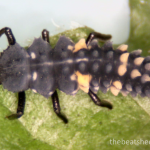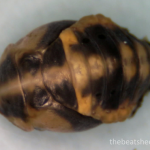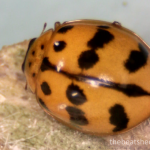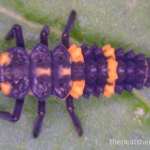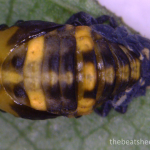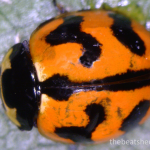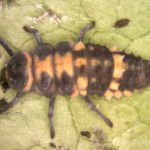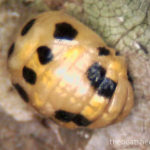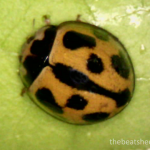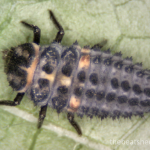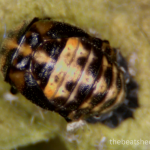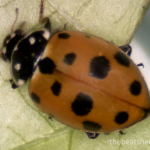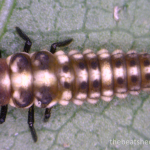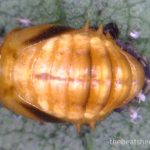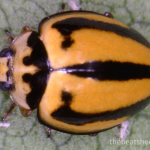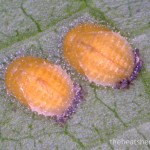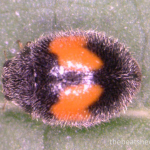Adult ladybird beetles are one of the most easily recognisable and iconic natural enemies in cropping systems. However, the group covers quire a few different species, of varying size, colour and patterns. Recognised as voracious feeders of small pests such as aphids, prey preferences and overall consumption rates of individual species are largely unknown.
- Images of the final instar larva, pupa and adult of several ladybird species commonly found in broadacre cropping, arranged by adult size.
- Detailed descriptions of 4th instar larvae
Larva, pupa and adult of common species
Three banded ladybird Harmonia octomaculata (8 mm)
Transverse ladybird Coccinella transversalis (5-6 mm)
Variable ladybird Coelophora inaequalis (5-6 mm)
(Note: there can be a wide range of patterning in the adult variable ladybird)
White collared ladybird Hippodamia variegate (4 mm)
Striped ladybird Micraspis frenata (4 mm)
Minute two-spotted ladybird Diomus notescens (2-3 mm)
Distinguishing features of late instar larvae
Three banded ladybird Harmonia octomaculata
The thorax is largely devoid of markings; small dots are present on the anterior mesothroax and posterior metathorax. Abdominal segment 1 (segment closest to head) has yellow/orange marking on lateral spines. Segment 4 has yellow/orange markings on each spine to form a distinct band. Some yellow/orange markings on central spines of segments 5, 6 and 7.
Transverse ladybird Coccinella transversalis
The prothrorax has two orange spots on the anterior end, the mesothorax and metathrorax have a central orange stripe. Abdominal segment 1 has orange markings on the lateral spines. Segment 4 has orange markings on all spines to give the segment a distinct band. The anterior end of segment 8 has orange banding.
Variable ladybird Coelophora inaequalis
Yellow/orange banding on the posterior surface of the prothorax, thick orange X-shaped patterns on the mesothorax and metathorax. Yellow/orange markings on the lateral spines of the first abdominal segment. Segment 4 mostly orange/yellow, lateral surfaces of segments 5, 6 and 7 yellow/orange. Yellow band at posterior end of segment 7.
Note: patterns on adult variable ladybirds can vary considerably; at this stage we aren’t sure if the same amount of variation occurs in the larvae or pupae of this species. The larva pictured developed into the adult patterning shown in this example.
White collared ladybird Hippodamia variegata
The posterior surface of the prothorax is orange, with a faint orange stripe in the centre of the mesothorax and methathrorax. The lateral surfaces of abdominal segment 1 are orange and there are faint orange marking around the spines of abdominal segment 4.
Striped ladybird Micraspis frenata
A central white stripe runs along the back from the mesothorax to abdominal segment 7. There are also lateral white markings along the side of the larva.
Smaller ladybird species
Larvae of smaller ladybird species sometimes seen in field crops, like the minute two spotted ladybird Diomus notescens and the mealybug ladybird Cryptolaemus montrouzieri are quite different. Larva of minute two spotted ladybird are more oval and have lateral projections along their flanks. The larva of Cryptolaemus are white with many long lateral projections—their general appearance is quite similar to one of their main prey, i.e. mealybugs.

